Songkran - The Thai New Year
- Rocco
- Mar 30, 2016
- 4 min read
The term Songkran from the Sanskrit language means “Transition” or “progress”, referring to the entrance of the Sun in a new sign of the zodiac. Therefor, it is believed that the origin of the today's Songkran Festival from the old Brahmanical India is coming.
Songkran is the time to respect the old and also move on to something new. It is an integral part of this transition to acquire merit through good deeds.
The Songkran festival is named after the Thai calendar, Buddhist New Year, which is always celebrated in Thailand between the 13th and 15th of April. At the beginning of the new year, traditional ceremonies and festivals are celebrated throughout the country. Also various parades, fairs, dances and boat races take place.
An integral part of Songkran is the "water splash”. On all streets people splash with water because many today believe the more water, the more rain falls and the next harvest will be better. The actual ritual of "water splash" based on the fact that you usually pours some water on the head and on the shoulder of his opponent, to wish him luck.

Wan Songkran - The first day
This day is the last day of the old year (Maha Songkran). He is subject to friends and family as well as the cleaning of their own houses and haunted houses. The family altar and the Buddha figures are decorated with flower garlands, candles and incense sticks.
The day is used in order to visit relatives and friends and to cultivate the traditional ceremony Rod Naam Dam Hua. The younger people pay their respects to the elderly and family members by pouring them scented water oder their hands. Also, they present small gifts and flowers to express their love and gratitude and also hope that the wrongdoings of the past year are forgiven. In return, the recipient give the children their blessing and wish them luck and success for their future lives.
Also the ceremony Song Nam Phra Putha Rup is traditionally carried out on that day, where Buddha statues are doused with rosewater. This can be translated as "the portrait of Buddha bathing". For this purpose, a pilgrimage to the Buddha statues in the surrounding temples. It represents a special merit, to decorate a Wat (Temple), to clean or to help with the repair.
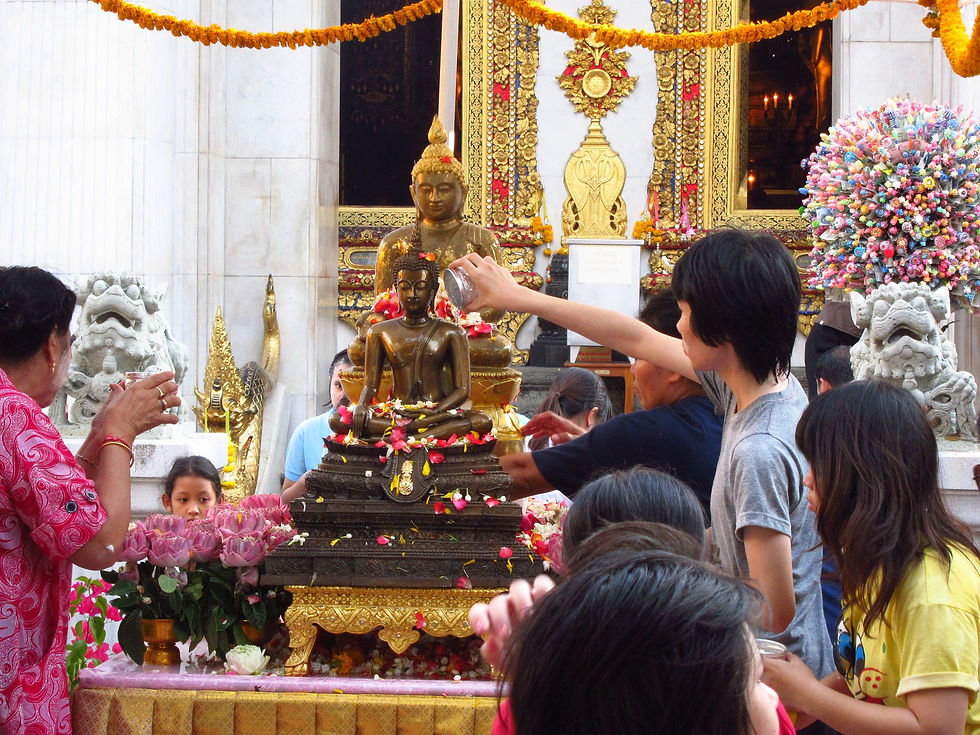
Across the country there are colorful parades and processions of decorated floats, marching bands and dance groups in which the beginning of Songkran is celebrated.
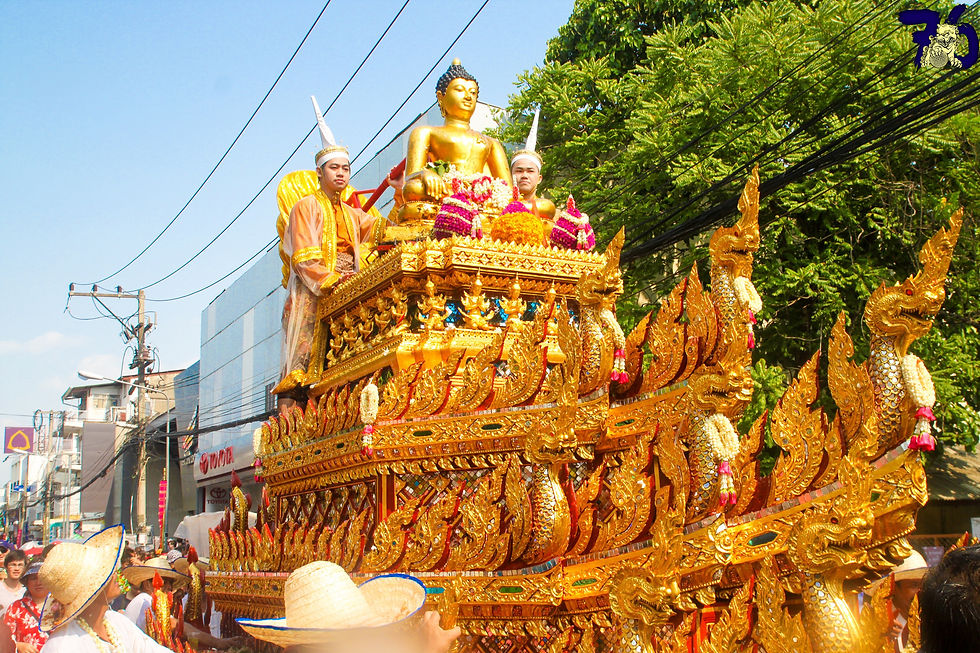

Wan Bao - The second day
On this day people go to the banks of rivers or beaches at the ocean to get sand. If no sand is present, it's often delivered by a truck. Now a Chedi (Buddhist stupa) in any size and variant is getting built in the vicinity of a Wat and decorated with shells and small bright or colorful stones.
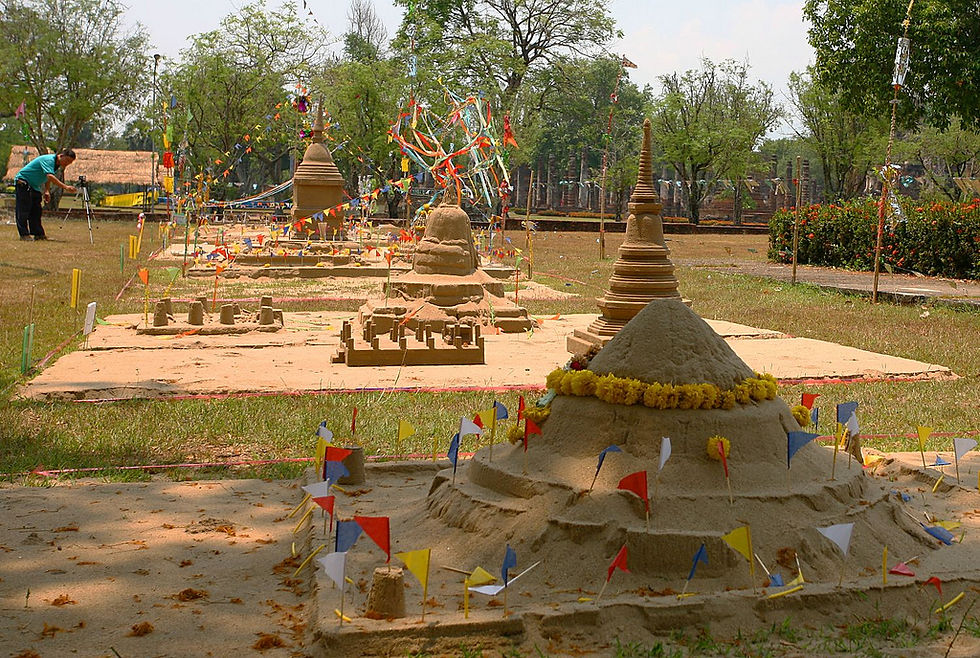
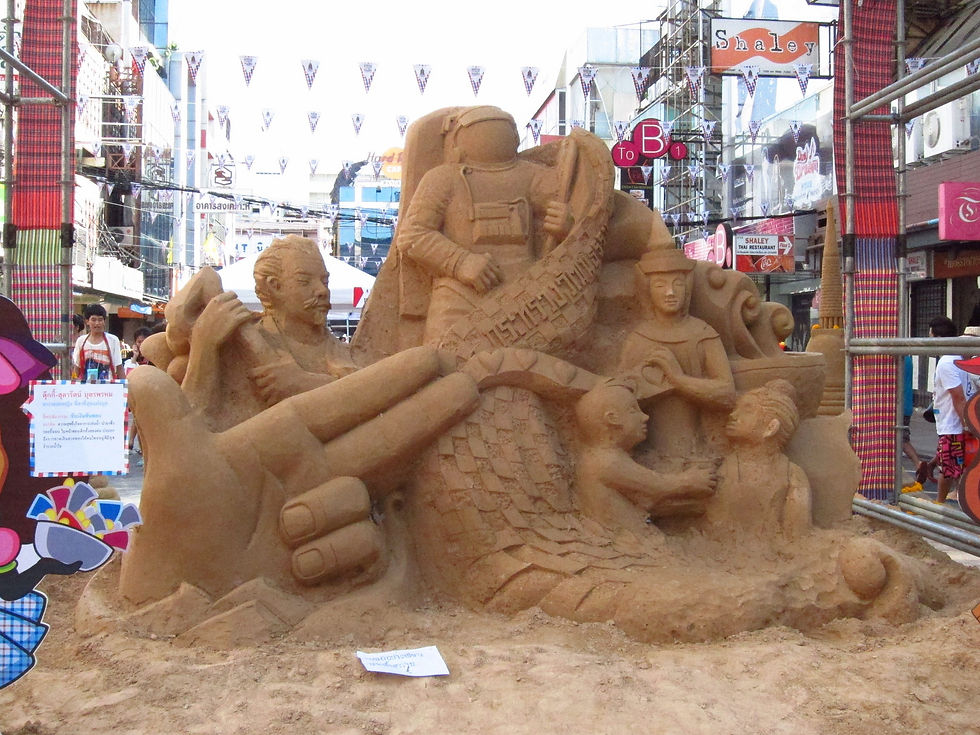
These works of art of sand are called Phrasai, abbr. of Phra Chedi Sai. To ask for prosperity and happiness, some Thais buried coins under the building. Finally, the chedi are adorned with flowers, candles, incense sticks and colorful paper garlands. Some Chedi's are adorned with banknotes, the money is intended to be donated to the Wat and thus the recognition of special merit is hoped.
The food for the Buddhist ceremonies at the new year's day are prepared in the evening.
Wan Padawan - The third day
In the early morning of New Year's Day (Wan Thaloeng Sok) the monks in the surrounding temples presents the prepared dishes. Also gifts such as candles, flowers, incense sticks, new robes, household products of all kinds and other utensils for daily use are donated. Following this, the faithful pour rose water over the hands of the monks and receive the blessing.
The rest of the day include "internal cleansing" and thus the many countless water battles in the streets of Thailand.


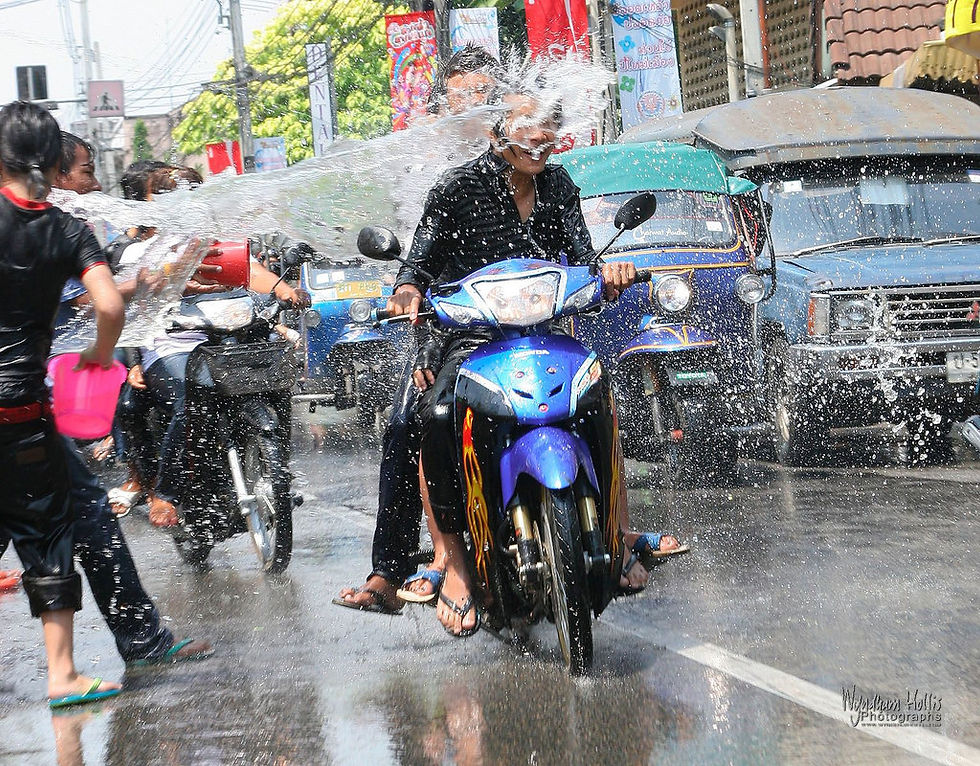
Where and when is celebration?
Phuket, April 13-15
In recent years the festival has become on Patong Beach and other tourist places a proper water battle, it gives a welcome cooling at high summer temperatures.
Bangkok, April 10-15
Biggest celebrations for the Thai new year festival are in the capital. Around the Wat Pho held impressive parades. On the Ratchadamnoen Avenue, Khao San Road, Phra Athit road and Sanam Luang promenade you will find a wide variety of cultural performences and countless small food stalls. Also in the Bang Lampbhu district in the Santi Chai Park and on the Rattanakosin Island is celebrated exuberantly.
Chiang Mai, April 12-15
Chiang Mai is famous for its magnificent processions and beauty contests. Lovingly decorated floats with statues of Buddha, accompanied by musicians and residents trek through the streets. In front of Wat Pra Singh, small Chedis are built of sand.
Phra Nakhon Si Ayutthaya, April 13-15
In the historical park of Ayutthaya and in front of Viharn Phra Mongkon Bophit, food and gifts are handed to the monks before bathing the Buddha statues starts. Important elements of the traditional celebrations include the release of birds and fish, which brings good krama, and the water battle with the Chang (Elephants), the beauty contest Miss Songkran and the magnificent flower procession that is very popular among the audience.
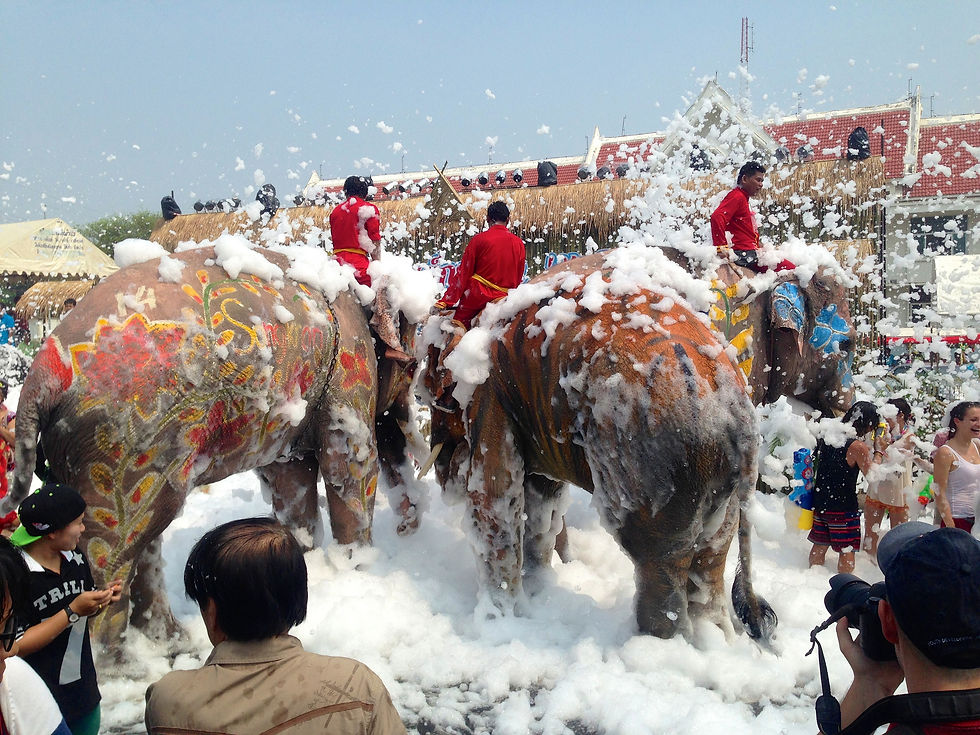
Accommodation:
Bangkok - Chiang Mai - Ayutthaya - Phuket


Commenti